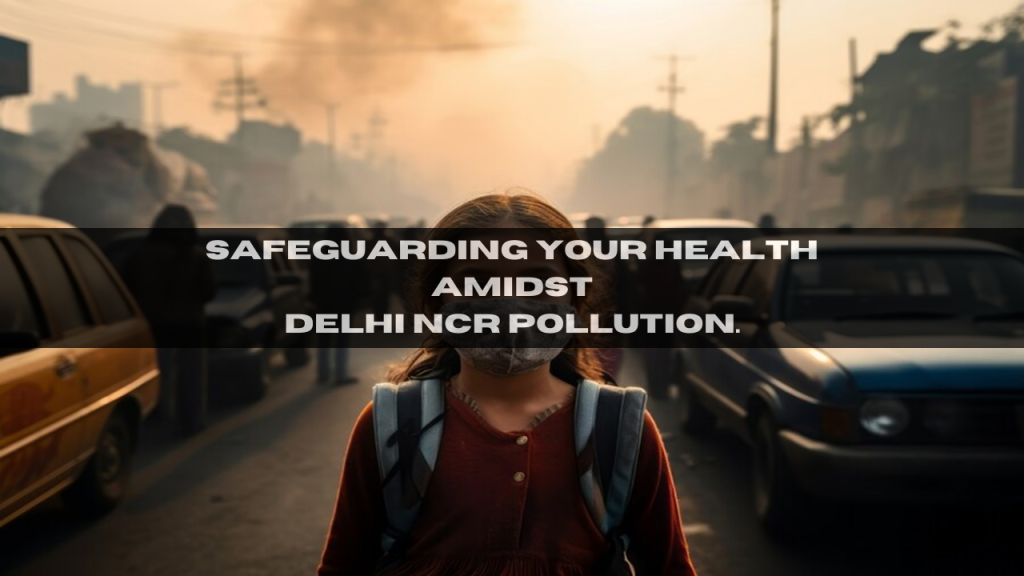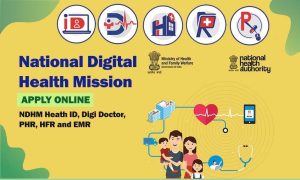In recent years, the air quality in Delhi and its surrounding National Capital Region (NCR) has become a cause for serious concern. The dense blanket of smog that envelops the region during the winter months poses significant health risks, with elevated levels of pollutants like particulate matter (PM2.5 and PM10), nitrogen dioxide, and sulfur dioxide.
As residents grapple with the adverse effects of this pollution on their well-being, it becomes crucial to adopt proactive measures to safeguard health amidst the challenging environmental conditions.
Understanding the Threat
The first step in safeguarding your health in the face of Delhi NCR pollution is to understand the nature and extent of the threat. Air pollution can lead to a variety of health issues, ranging from respiratory problems and cardiovascular diseases to long-term conditions such as lung cancer. Children, the elderly, and individuals with pre-existing health conditions are particularly vulnerable.
Practical Measures for Safeguarding Health:
Stay Informed and Monitor Air Quality:
- Regularly check air quality indices and forecasts to stay informed about pollution levels in your area. Several mobile apps and websites provide real-time air quality updates, helping you plan your outdoor activities accordingly. When pollution levels are high, consider reducing outdoor exposure.
Use Air Purifiers:
- Investing in a good quality air purifier for your home can significantly improve indoor air quality. Ensure that the purifier is capable of filtering out PM2.5 particles and other pollutants. Keep windows and doors closed during periods of high pollution to prevent outdoor air from entering your living spaces.
Wear Masks:
- While it may seem like a small measure, wearing masks designed to filter out pollutants can provide a layer of protection, especially during peak pollution hours. N95 or N99 masks are effective in reducing exposure to fine particulate matter and other harmful substances present in the air.
Promote Green Spaces:
- Support and participate in initiatives that promote green spaces in your community. Trees and plants act as natural air purifiers and can contribute to reducing pollution levels. Join local tree planting drives and advocate for the creation and maintenance of parks and green zones.
Exercise Indoors:
- Regular exercise is essential for maintaining good health, but during periods of high pollution, it’s advisable to opt for indoor activities. Join a gym, practice yoga, or engage in home workouts to reduce exposure to outdoor pollutants.
Stay Hydrated and Maintain a Healthy Diet:
- Pollution can weaken the immune system, making the body more susceptible to illnesses. Stay hydrated to help flush out toxins and maintain a balanced diet rich in antioxidants. Foods high in vitamins C and E, such as citrus fruits and nuts, can aid in combating the oxidative stress caused by pollution.
Limit Use of Personal Vehicles:
- Vehicle emissions contribute significantly to air pollution. Consider using public transportation, carpooling, biking, or walking to reduce your carbon footprint. If possible, opt for electric or hybrid vehicles that have lower emissions.
Create a Clean Indoor Environment:
- Use natural cleaning products and ensure proper ventilation in your home to minimize indoor pollution. Avoid smoking indoors, as tobacco smoke is a major contributor to indoor air pollution.
Advocate for Sustainable Practices:
- Raise awareness about the importance of sustainable practices in your community. Encourage the adoption of clean energy sources, waste reduction, and responsible disposal methods to address the root causes of pollution.
Heart Related Risks Due to Pollution.
1. Particulate Matter (PM):
– Fine particulate matter, known as PM2.5, can penetrate the lungs and enter the bloodstream
– Increased exposure to PM2.5 has been associated with a higher risk of heart attacks and strokes.
Studies have suggested that for every 10 micrograms per cubic meter (µg/m³) increase in PM2.5 exposure, there may be a 4-6% increase in the risk of cardiovascular events
2. Nitrogen Dioxide (NO2):
– Long-term exposure to nitrogen dioxide has been linked to an elevated risk of cardiovascular events.
– NO2, commonly found in traffic-related air pollution, may contribute to the development of heart diseases.
3. Ozone:
– Ozone, present in smog, has been identified as a factor in cardiovascular health.
– Studies suggest a correlation between higher ozone levels and an increased incidence of cardiovascular problems.
4. Inflammatory Response:
– Pollutants can trigger an inflammatory response in the body, including the cardiovascular system
– Chronic inflammation is a recognized risk factor for various heart conditions.
5. Individual Vulnerability:
– Individuals with pre-existing heart conditions are more susceptible to the adverse effects of pollution.
– Personal health factors play a crucial role in determining the level of risk posed by exposure to pollutants.
6. Geographical Variances:
– The impact of pollution on heart health can vary regionally.
– Urban areas with higher pollution levels may experience a greater prevalence of cardiovascular issues compared to less polluted regions.
7. Cumulative Effects:
– Prolonged exposure to high pollution levels over time may have cumulative effects on heart health.
– Long-term studies indicate an increased risk of cardiovascular incidents with sustained exposure.
In summary, air pollution, characterized by particulate matter, nitrogen dioxide, and ozone, poses significant risks to cardiovascular health. These risks are influenced by individual susceptibility, geographical factors, and the cumulative impact of prolonged exposure. Efforts to mitigate pollution can contribute to overall heart health and well-being.
Ways to prevent heart risks due to pollution.
1. Regular Blood Pressure Checkups:
– Monitoring blood pressure regularly helps detect and manage hypertension, a significant risk factor for heart issues aggravated by pollution.
– Timely identification of elevated blood pressure allows for proactive intervention and lifestyle adjustments.
2. Environmental Awareness and Avoidance:
– Stay informed about local air quality levels and pollution forecasts.
– Limit outdoor activities during periods of high pollution, and choose locations with cleaner air for exercise.
3. Healthy Lifestyle Choices:
– Adopt a heart-healthy diet rich in fruits, vegetables, and whole grains.
– Engage in regular physical activity to promote cardiovascular health and strengthen the body’s ability to cope with environmental stressors.
4. Indoor Air Quality Improvement:
– Enhance indoor air quality by using air purifiers and ensuring proper ventilation.
– Minimize exposure to indoor pollutants such as tobacco smoke, household chemicals, and allergens.
By integrating these strategies into daily life, individuals can take proactive measures to reduce the impact of pollution on heart health. Regular blood pressure checkups, coupled with environmental awareness and a healthy lifestyle, contribute to a holistic approach in preventing heart risks associated with pollution.
Consultation with Doctor
Consulting with Dr. Gaurav Minocha, an experienced cardiologist, is essential for addressing heart risks linked to air pollution. Dr. Minocha can offer personalized insights based on a thorough assessment of cardiovascular health, considering factors like medical history and lifestyle.
Regular check-ups with him provide an ongoing strategy for monitoring and mitigating the impact of air pollution on heart health, ensuring a proactive and individualized approach to cardiovascular well-being.
Conclusion.
Safeguarding your health in the face of Delhi NCR pollution requires a combination of individual and community-based efforts. By staying informed, adopting practical measures, and advocating for sustainable practices, we can collectively work towards creating a healthier environment.
It’s imperative for individuals, communities, and policymakers to collaborate in implementing long-term solutions to address the root causes of air pollution and ensure a cleaner, safer future for all residents of Delhi and the NCR.





